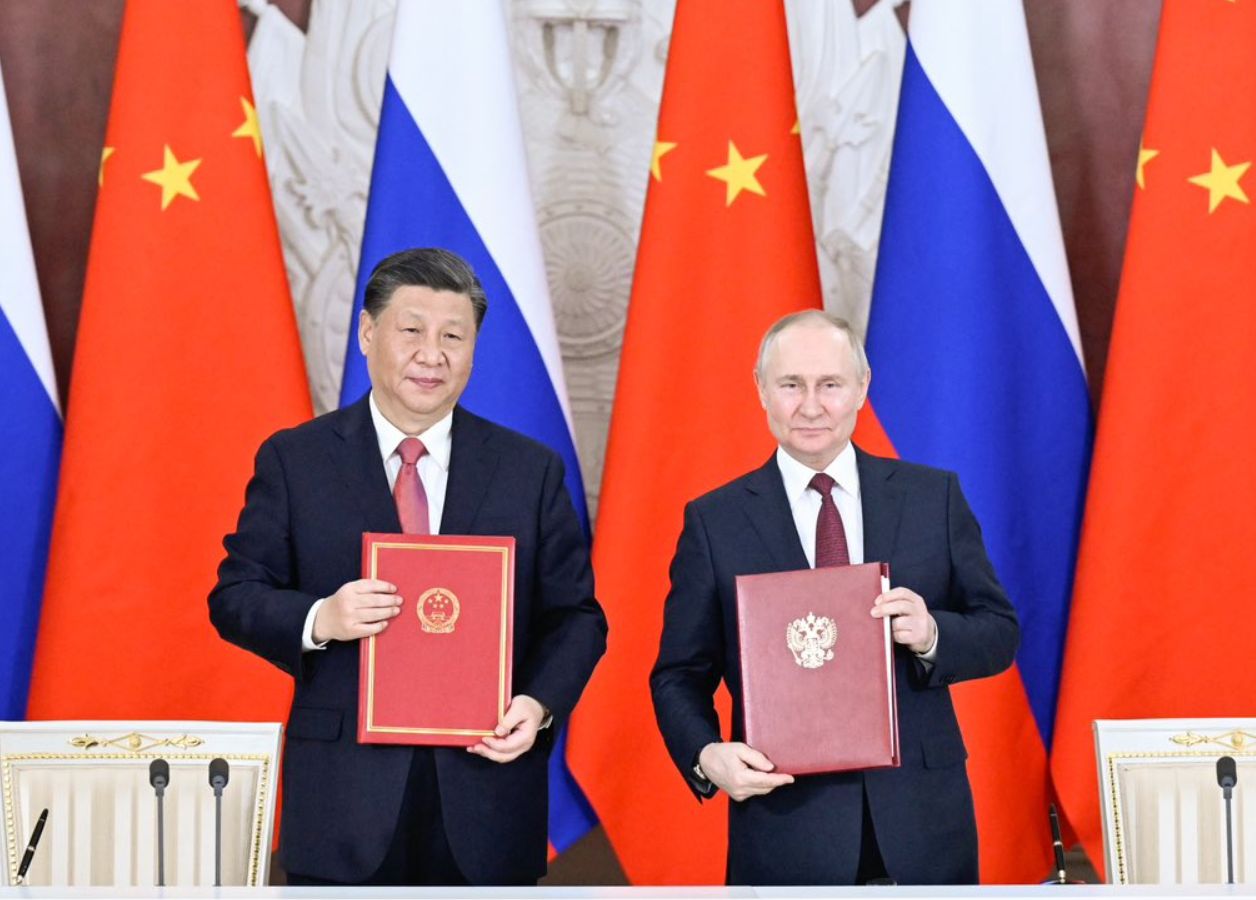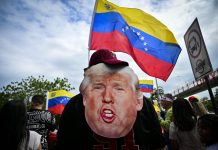Communist China is too fond of Sun Tzu’s key warfare strategy: “The more you learn from others, the less you need to arm yourself. The more you arm yourself, the less you can rely on others.”
Taking a cue from the pre-Christ era military strategist, China has gone on to study the Russia-Ukraine war to draw some key lessons for its future military campaigns.
Sourcing information floating around in open sources such as Chinese mainstream media and academic publications, The New York Times (NYT) has listed a few learnings that China is taking home from the Ukraine war.
Formidable electronic warfare; use of hypersonic weapons; holding large but adequate weapons stock; technologically robust military industry; and a credible nuclear deterrence — all key takeaways for China from both successes and failures of the Russian military operations that have dragged on for over a year now.
Hypersonic Missiles
The Chinese have analyzed how Russia used hypersonic weapons to destroy an ammunition bunker, a fuel depot, and other targets. In mid-March, Russia launched six Kinzhal hypersonic missiles at Ukraine, amongst a barrage of around 80 missiles, as claimed by Ukraine’s military chief General Valery Zhaluzny.
Before that, Russia used the Kinzhal on March 18 last year. According to its defense minister Sergei Shoigu, a large underground warehouse storing missiles, ammunition, and artillery in Delyatyn village in the Ivano-Frankvisk region was targeted.
Satellite Constellations
“They have studied how Ukrainian troops used Starlink satellite links to coordinate attacks and circumvent Russian efforts to shut their communications and warned that China must swiftly develop a similar low-orbit satellite system and devise ways to knock out rival ones,” the NYT article said.
Reports about Starlink’s success against Russia have been conflicting, with some claiming Russia’s legendary Electronic Warfare (EW) capability has found a way around it. Others, like The Economist, maintain that the Internet satellite constellation has greatly irritated the Russian military.
However, some observers point to reconciliatory statements from Tesla and SpaceX CEO Elon Musk on Russia, taking positions backing Moscow’s narratives to argue that Russia has quietly wielded its ability to jam Starlink.

China also saw the recent US launch of the first ten satellites of a multi-billion-dollar network of hundreds of small spacecraft in Low Earth Orbit (LEO) to track hypersonic missiles by the Space Development Agency (SDA). SpaceX’s Falcon 9 rocket put the satellites in place on Sunday.
“Faced with the threat of Starlink,” Chinese rocket and military researchers said in a study, “we must develop and build our own low-orbiting satellites.”
Big Businesses Need Both Russia & China
And like Elon Musk for Russia, China has big businesses rooting for it, like Dutch semiconductor forging machine maker ASML Holdings’ CEO Peter Wennink. ASML is the world’s only manufacturer of highly advanced and intricate Extreme Ultraviolet Lithography (EUV) machines that etch complex circuits on wafer-thin chips.
Wennink has long criticized the US ban on semiconductor technologies to China, which included directions to ASML to stop exporting such devices to Beijing.
In January, Bloomberg reported Wennink pointing out how banning semiconductor forging technology in China would just push it to become even more self-reliant. In April 2021, he recommended limiting actions against China to Intellectual Property Rights violations but not closing off Beijing from high-end technology.

Strategic Nuclear Deterrence
The NYT also reported how the Chinese strategists learned from Russian nuclear weapons successfully deterring US and European countries from directly entering the conflict.
President Vladimir Putin’s core narrative has been how the nature of Western support to Ukraine was aimed at confronting Russia and continuing a decade-long strategic encirclement of his country. Therefore, any policies further down such a path threatened Russia existentially, which would justify his use of atomic weapons.
These episodes of Russia brandishing nuclear weapons have “encouraged the expansion of China’s own nuclear weapons program,” NYT added. A few times last year, there were reports on satellite images of an increasing number of Chinese underground nuclear silos.
Think tanks like the Stockholm International Peace Research Institute (SIPRI) have also noted that the Chinese are “modernizing” their nuclear delivery systems. Reuters claims in the latest report that China is keeping at least one nuclear-powered ballistic missile submarine on permanent deterrent patrols.
Interestingly, reuniting with Taiwan also has a significant nuclear element, according to Chinese defense affairs commentator Zhao DaShuai. Speaking to EurAsian Times, Zhao said a Taiwan assimilated into mainland China will allow Chinese SSBNs to “sail into the Pacific unimpeded” and achieve “guaranteed nuclear deterrence against the US.”

Have Enough Weapons & Ammo
The NYT report said the Chinese have learned from Russia’s shortfall in ammunition — that, to a great extent, is now believed to have partly influenced its slow, grinding ‘long war’, where it was prepared to keep taking equipment and personnel losses to achieve larger political goals.
EurAsian Times had reported British Chief of General Staff General Patrick Sanders, noting this Russian warfighting pattern. “(Russia) wages war at the strategic, not the tactical level. Its depth and resilience mean it can suffer any number of campaigns, battles, and engagements loss, regenerate, and still ultimately prevail,” he said.
Zhao, too said that China has learned not to start a war “without carefully preparing and stockpiling munitions and resources.”
“Pentagon officials have said that Russia’s troubled invasion serves as a stark warning to China…over Russian forces’ shortfalls of weapons and ammunition,” NYT said. It quoted from an article in a leading defense technology magazine, saying Chinese military planners are learning from the “shortcomings exposed in the Russian military’s logistics and supplies.”
Some Chinese experts have said that Russia’s difficulties marshaling enough infantry troops suggest that China needs to keep its ground forces strong and large, even while it expands those of sea and air. Russia’s experience showed that “a great power must maintain ground forces of a reasonable scale.
“Otherwise, it will lose its advantage on the battlefield,” Wu Dahui, a former military researcher now at Tsinghua University in Beijing, wrote this year.
‘US Will Use Taiwan Against China Like It Used Ukraine Against Russia’
More broadly, Russia’s troubles in Ukraine appear to have hardened official Chinese views that Beijing, like Moscow, is the focus of a United States-led “hybrid warfare” campaign that includes economic sanctions, technological bans, information campaigns, and cyberattacks.
“The United States and the West have seized on this conflict to engage in the total political negation, all-out diplomatic suppression and full cultural isolation of Russia,” Gao Yun, a researcher at China’s Academy of Military Sciences, one of the elite institutions that shape war planning, wrote in the People’s Liberation Army’s leading newspaper.
“As well as fierce clashes of blood and fire on the battlefields, the combat in the realm of information and perceptions is equally intense.”
- The author can be reached at satamp@gmail.com
- Follow EurAsian Times on Google News




